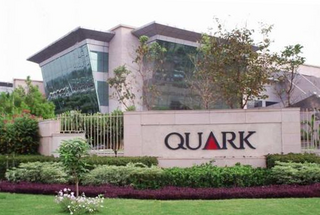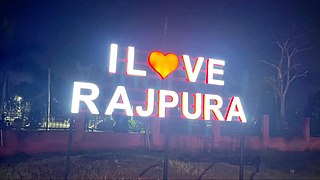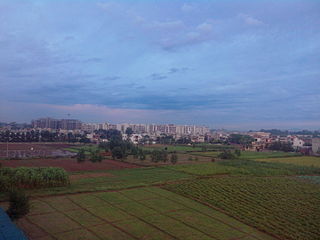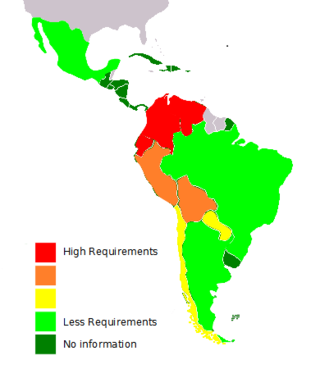Related Research Articles

Chandigarh is a union territory and planned city in northern India, serving as the shared capital of the states of Punjab and Haryana. Chandigarh is bordered by the state of Punjab to the north, west and the south, and by the state of Haryana to the east. It constitutes the bulk of the Chandigarh Capital Region or Greater Chandigarh, which also includes the adjacent satellite cities of Panchkula and Mohali. It is situated near the foothills of the Himalayas, located 260 km north of New Delhi and 229 km southeast of Amritsar.

Mohali, officially known as Sahibzada Ajit Singh Nagar, is a planned city in the Mohali district in Punjab, India, which is an administrative and a commercial hub lying south-west of Chandigarh. It is the headquarters of the Mohali district. It is also one of the six Municipal Corporations of the State. It was officially named after Sahibzada Ajit Singh, the eldest son of Guru Gobind Singh.

Effluent is wastewater from sewers or industrial outfalls that flows directly into surface waters either untreated or after being treated at a facility. The term has slightly different meanings in certain contexts, and may contain various pollutants depending on the source. Treating wastewater efficiently is challenging, but improved technology allows for enhanced removal of specific materials, increased re-use of water, and energy production from waste.

Sukhna Lake in Chandigarh, India, is a reservoir at the foothills of the Himalayas. This 3 km² rainfed lake was created in 1958 by damming the Sukhna Choe, a seasonal stream coming down from the Shivalik Hills. Originally, the seasonal flow entered the lake directly causing heavy siltation. To check the inflow of silt, 25.42 km² of land was acquired in the catchment area and put under vegetation. In 1974, the Choe was diverted and made to bypass the lake completely, the lake being fed by three siltation pots, minimizing the minimizing silt into the lake itself.

Wastewater quality indicators are laboratory test methodologies to assess suitability of wastewater for disposal, treatment or reuse. The main parameters in sewage that are measured to assess the sewage strength or quality as well as treatment options include: solids, indicators of organic matter, nitrogen, phosphorus, indicators of fecal contamination. Tests selected vary with the intended use or discharge location. Tests can measure physical, chemical, and biological characteristics of the wastewater. Physical characteristics include temperature and solids. Chemical characteristics include pH value, dissolved oxygen concentrations, biochemical oxygen demand (BOD) and chemical oxygen demand (COD), nitrogen, phosphorus, chlorine. Biological characteristics are determined with bioassays and aquatic toxicology tests.

Mohali district, officially known as Sahibzada Ajit Singh Nagar district or SAS Nagar district, is one of the twenty three districts of Punjab, a state in north-west India. It was formed in April 2006 and is 18th district of Punjab, created next to Pathankot district. This district was carved out of areas falling in Ropar and Patiala District. It is situated next to the union territory of Chandigarh and Panchkula district of Haryana.
Dera Bassi is a satellite city of Chandigarh and a municipal council in Mohali district in the state of Punjab, India. Dera Bassi is located on the Chandigarh – Delhi National Highway, 8 km from Chandigarh. It is located within 20 km from Chandigarh, Mohali and Panchkula. It is strategically located near the boundary of Haryana, Punjab and Union territory of Chandigarh. Derabassi is most famous for its industrial belt, situated for the most part on Ramgarh and Barwala Road. The nearby sub town of Lalru was once a famous market for red chilli powder. The city and the nearby area host eight Engineering, B.Ed., Paramedical and Management institutes.

Rajpura is a city in Patiala district in the Indian state of Punjab, India, situated along the border of the Indian state of Haryana. It is located 26 KM Patiala city, towards East from District Head Quarter. It is Tehsil Head Quarter. Rajpura is the largest tehsil of the district.

Zirakpur is a satellite town, in Mohali District, Punjab, neighboring Mohali, Chandigarh in India. It is set on the foothills of Shivalik hills. It is part of the tehsil Dera Bassi. It is the gateway to Chandigarh from Delhi. It comprises mainly the following areas near Chandigarh Airport including VIP Road, Dhakoli, Lohgarh, Bhabat, Bishanpura, Kishanpura, Nabha, Gazipur, Baltana, Singhpura, Peer Muchalla and Dyalpura. This town is situated on the junction of national highways Himalayan Expressway, National Highway 5 (India) towards Shimla, Ambala Chandigarh Expressway towards Ambala and National Highway 7 (India) towards Patiala.

Chandigarh Capital Region (CCR) or Chandigarh Metropolitan Region (CMR) is an area, which includes the union territory city of Chandigarh, and its neighboring cities of Mohali, Kharar, Zirakpur, New Chandigarh (in Punjab) and Panchkula (in Haryana). Chandigarh Administration, Greater Mohali Area Development Authority (GMADA) and Haryana Urban Development Authority (HUDA) are different authorities responsible for development of this region.

Punjab has a long history of education.
Chandigarh Metro is a proposed rapid transit system for the city and union territory of Chandigarh in India. The project was first scrapped in 2017 due to viability, but in March 2023 the project was approved.
Budha Nullah or Budha Naala is a seasonal water stream, which runs through the Malwa region of Punjab, India, and after passing through highly populated Ludhiana district, Punjab, India, it drains into Sutlej River, a tributary of the Indus river. Today, it has also become a major source of pollution in the region as well the main Sutlej river, as it gets polluted after entering the highly populated and industrialized Ludhiana city, turning it into an open drain. Also, since large area in south-western Punjab solely depend on the canal water for irrigation, and water from Budha Nullah enters various canals after Harike waterworks near Firozpur, thus affecting far-reaching areas such as Malout, Zira, upper Lambi, while the areas being fed by Sirhind feeder, are the most-affected by its pollution.

Wastewater discharge standards protect water sources from pollution and mismanagement. Each country in Latin America has its own set of standards, and these vary according to types of water use, agricultural, industrial or recreational use. Water quality is maintained by controlling the physicochemical and bacteriological parameters. The majority of water laws include fines for noncompliance. In many cases fines are inadequate and do not stop offending. In other cases the standards are lax and monitoring is sub-par.

Lalru is a town and a Municipal Council In Mohali District about 30 km from Chandigarh, the capital of both Haryana and IndianPunjab, on the Chandigarh-Ambala National Highway, NH 22. Lalru is having one of the toll tax barriers on this Chandigarh - Delhi National Highway. It is part of Greater Mohali and Chandigarh Capital Region (CCR) or Chandigarh Metropolitan Region (CMR), Which is an area, which includes the union territory city of Chandigarh, and its neighboring cities of Mohali, Zirakpur, New Chandigarh, and Panchkula. Chandigarh Administration, Greater Mohali Area Development Authority (GMADA) and Haryana Urban Development Authority (HUDA) are different authorities responsible for the development of this region.

Water pollution is a major environmental issue in India. The largest source of water pollution in India is untreated sewage. Other sources of pollution include agricultural runoff and unregulated small-scale industry. Most rivers, lakes and surface water in India are polluted due to industries, untreated sewage and solid wastes. Although the average annual precipitation in India is about 4000 billion cubic metres, only about 1122 billion cubic metres of water resources are available for utilization due to lack of infrastructure. Much of this water is unsafe, because pollution degrades water quality. Water pollution severely limits the amount of water available to Indian consumers, its industry and its agriculture.
The N-Choe is a seasonal stream that originates in Chandigarh, India and runs across the Leisure Valley to Kajheri, Mohali Punjab, India, and later merges into the Ghaggar River. The stream runs across Leisure Valley and the PCA Cricket Stadium. It is one of the seasonal rivulets in Chandigarh, which include Sukhna Choe in the East and Patiala Ki Rao in the West. The Choe Nala originates at sector 29 in Chandigarh, Punjab.
Naya Gaon(Nawa Graon or Nayagaon) is a small town and a Municipal council, formerly Nagar panchayat (Notified Area Committee) in the Majri Sub-Tehsil and Kharar Tehsil of District S.A.S. Nagar of Punjab State of India. Chandigarh borders Naya Gaon on two sides. Pin code 160103
Sector 56 is residential and entry level sector located in Chandigarh. It is famous for Verka Milk Plant and Dara Studio, owned by Dara Singh. Also the sector have many marriage palaces such as celebration, Libra orchidand motor market. It is covered with Sector 54, 55, 57, Bar Majra. Seasonal Stream Patiali Ki Rao also touches this sector.

New Chandigarh is a new planned smart city near Mullanpur in the Mohali district in Punjab, India. It has been designed as an extension of the city of Chandigarh. It is developed by the Greater Mohali Area Development Authority. A digital land survey was started by using a drone on 26 April 2018 and was completed on 24 June 2018. Initial Master of city is divided in sectors numbering 1 to 21.
References
- ↑ Sand mafia scripting swan song for Patiala Ki Rao choe: Retrieved, The Hindustan Times 3 April 2015
- ↑ N-choe: Stream of filth: Retrieved, The Tribune 5 April 2010
- ↑ UT panel raises Patiala Ki Rao pollution with Punjab: The Times of India
- ↑ 'Effluent discharge in N-Choe beyond permissible limit': Retrieved Times of India, 31 July 2010
- ↑ Untreated sewage being discharged in N-choe, admits GMADA in RTI reply:Retrieved Indian Express, 05/2010